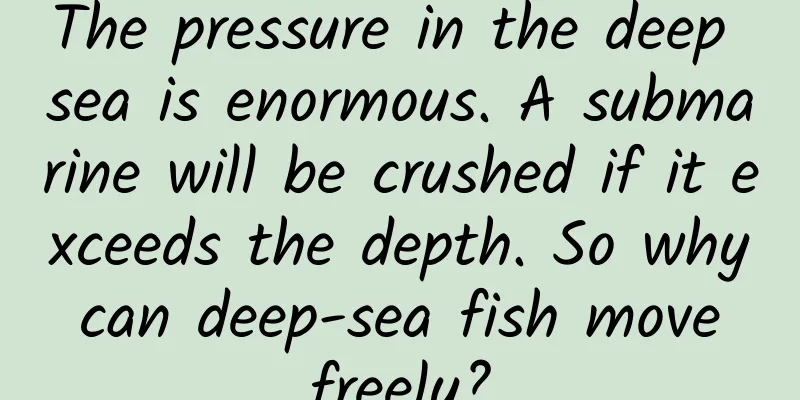4 hours before sinking, the Titanic responded to the iceberg warning like this...

|
"CQD SOS 11.50pm from MGY. We have hit an iceberg and are sinking rapidly. Position is N41.46 W50.14." On April 14, 1912, 24-year-old amateur radio enthusiast Arthur Ernest Moore received some weak signals. In that message, MGY represented the exclusive radio call sign of a ship, and the ship was called "Titanic". Not long after, several more messages came from the radio equipment: "We are sending the passengers away in small boats." "The women and children on board won't last much longer." However, Adi could do nothing about it. He was in a small town 4,000 kilometers away from the place where the message was sent, witnessing the sinking of the giant ship through the radio. He may not have realized that what he was "witnessing" would become one of the most famous disasters of the 20th century. Radio technology not only added an audience to this unprecedented tragedy. Before this, the people on the Titanic had already known the "iceberg killer" in advance through radio. But even so, reminders, warnings, and calls for help could not change the tragic ending... Arthur Ernest Moore's House | findagrave.com Marconi Radio System: Imperfect communication The Titanic was equipped with a Marconi radio system. In 1895, Italian engineer Marconi began to study the use of electromagnetic waves for communication. A year later, he successfully conducted a 14.4-kilometer communication experiment in the UK and obtained a patent. Subsequently, the Marconi Wireless Telegraph Company was established, and in 1901, the first transatlantic radio communication was carried out, which was an unprecedented success. Marconi, who was at the height of his fame, began to install radio transmitters on ships to build a bridge of communication between the isolated ships drifting in the ocean. Restored radio operating room | Science Museum However, Marconi's radio system had obvious disadvantages. First, the device was very complicated and required specialized personnel to operate, and it could not transmit signals continuously. In addition, the wavelength of the radio signal used by Marconi was relatively long, and this signal was easily interfered with. At that time, some radio amateurs who loved pranks invaded the navy's radio band to transmit false information. Despite its flaws, Marconi's huge say in the radio business allowed his company to monopolize the market at the time. As the world's largest cruise ship at the time, the Titanic was definitely equipped with a "high-tech" device called radio. However, the purpose of this radio system was to process the communication information of the passengers on the ship. For example, a wealthy businessman sent a lot of telegrams to his American partner, discussing playing poker together after the ship docked. "Shut up, I'm busy" Busy in the Titanic's radio room were the only two radio operators on board, Jack Phillips and Harold Bride. These two young men worked at full capacity every day, providing uninterrupted radio communication services to the guests on board. These two radio operators were from Marconi Company, they were not sailors, and were not under the jurisdiction of the captain. Therefore, they would put the needs of customers as the first priority, and then report the news from other ships to the captain. To make matters worse, the equipment was unstable and the transmitter was out of order for a while, so there was a backlog of messages waiting to be sent and received in the radio room. The iceberg warning messages were intertwined with the passengers' personal messages, and the operators were busy processing these messages. And so, the time came to April 14th. At 9 a.m., the radio room received a report from the nearby Caronia: "There is an iceberg." The operator at the time was Phillips, who told the news to Captain Edward Smith. At 1:42 p.m., another Baltic reported that it had discovered "icebergs and large amounts of floating ice." After learning the news, Captain Smith decided to change the course and head south to try to bypass the area. However, the captain did not ask the ship to slow down. He had his reasons: the Titanic belonged to the British White Star Line, which was known for its punctuality. As the ship was on its maiden voyage, the captain had to arrive at the destination, New York Harbor, on time. In the eyes of sailors, icebergs were not a big threat. Advanced shipbuilding technology had made ships at that time quite strong. In 1907, a German ship hit an iceberg, but they were able to smash the iceberg with their bow and still successfully completed the voyage. Therefore, the captain still asked the crew to maintain a speed of 22 knots (about 25 miles per hour), only 2 knots lower than the maximum speed limit. For the next few days, the captain received no more radio messages about the iceberg. However, this is not because there is no relevant information, but the operators are too busy to remember these messages. Of course, it is also possible that the operators did not realize the importance of these messages and thought that the captain had already known about the nearby iceberg. Titanic forwarded a telegram about the location of two large icebergs | Yves Renard/WikiCommons Among the messages that did not leave the radio room were: At 13:45, America reported that they had "passed two large icebergs"; At 19:30, the Californian reported "three large icebergs"; At 21:40, the Mesaba reported that "a lot of floating ice and large icebergs were seen". At this time, the radio operators were working overtime to send passengers' information to the Newfoundland relay station, as there was too much backlog of business to be processed. At 22:30, the Californian, which was only 30 kilometers away from the Titanic, decided to stop in the waters for the night and set off again at dawn. Then, the Californian's radio operator Evans sent another warning to the Titanic: "We are blocked by an iceberg..." At this point, Phillips interrupted the signal and replied: "Shut up! I'm working." Don't make a noise! 丨Movie "Titanic" The iceberg warnings that were repeatedly ignored eventually became a prophecy of the Titanic tragedy. Which distress signal should be used? At 23:40 on April 14, 1912, the Titanic's lookout spotted an iceberg in front of the ship. The officer on duty immediately tried to turn right, but it was too late. The Titanic hit the iceberg on the starboard side, a crack appeared in the hull, and a large amount of seawater poured in. The ship did not sink immediately, but began to sink slowly, and the people on board had time to save themselves. The radio operators also began to send out signals, but at first, they did not choose to use the internationally recognized distress signal. The distress message received by the Biama: We have hit an iceberg and are sinking rapidly, please help | British National Archives The captain rushed into the radio room and asked Phillips, who was on duty, to immediately send out a radio distress signal to the surrounding area - "CQD". This is the distress signal used by Marconi. CQ stands for "sécu", which is the abbreviation of "sécurité (safety)"; D stands for "emergency (Détresse)". Half an hour later, Brad suggested that Phillips change the distress signal: SOS and CQD appeared alternately in the radio messages sent out. CQD and SOS appear in distress signals丨britannica.com At that time, although ships at sea had long begun to use radio to seek help, the signals between companies were not unified. CQD was a common number in the UK, where Marconi's headquarters was located. In addition, there was another set of numbers from Germany, in which the distress signal was "SOS". "SOS" is not an abbreviation of a word, but just because, in Morse code, SOS is composed of "three short, three long, and three short again", which is more convenient and quick to type. In 1908, an international organization recommended the use of SOS as the official international distress signal, but Marconi did not have time to fully replace the new signal. One of the considerations may be that the users of the SOS code were actually Marconi's main competitors. The United States directly refused to sign the SOS agreement because it opposed international radio regulation. The inconsistency of the distress signal prevented other radio operators who heard the signal from reacting in time. But for the operator on the Californian, who was closest to the Titanic, he could not receive the CQD or SOS signal sent by the Titanic. After being told to "shut up", Evans on the Californian turned off the communication equipment and went back to sleep. Take a break from watching the movie Titanic “We are coming” The Titanic's cry for help was finally heard by other ships. The Frankfurt was one of the first ships to hear the distress signal. When the operator heard the signal, he did not seem to react and did not give the location of his ship. After 20 minutes, the Frankfurt asked what happened, which made Phillips on the Titanic anxious and angry, and even called him "You fool". Despite this, the Frankfurt still sent a signal: Our captain will go for you. Diagram of radio communications between the Titanic and other ships | clickamericana.com "We are rushing to you" the Bod also sent a radio message to the Titanic. As the call for help continued, more and more ships turned around and broke through the waves. The Carpathia, the Biama, the Mount Temple... While they were moving forward at full speed, they also kept trying to keep in touch with the Titanic. At this time, the Titanic was still sinking. Phillips let Breed go first, and then he continued to send out a distress signal calmly. However, at this time, the distress message was useless no matter how far it was transmitted. The rescue ships could not travel at the speed of light on the sea in the middle of the night like radio, and they could only wait for the Titanic to sink at full speed. At 2:20 a.m., Phillips sank to the bottom of the sea along with the Titanic. After that, there was no response to the rescue ship's call. end An hour and a half later, the Carpathia arrived at the scene and rescued 710 people on the lifeboat. The Titanic, known as the "unsinkable", suffered a shipwreck on its first voyage, and the final death toll exceeded 1,500. There is no doubt that the causes of this tragedy are complex, including unpredictable weather, dangerous geographical conditions, and of course, the captain and crew's bad decisions. The problem with the radio was just one of many factors. Even so, we can’t help but wonder, “What if the operator had reported the iceberg warning to the captain in time?”, “What if all ships had issued a unified distress signal?”, “What if the Californian’s radio operator hadn’t fallen asleep?”, “What if…” Neglect, arrogance, monopoly... Radio, as a new technology at the time, did allow information to be transmitted thousands of miles away. But the inventor certainly didn't expect that the final outcome of the story would be to give the disaster an additional listener to listen in real time. The belated crew of the Biama took photos of the nearby icebergs. | DAVID BRESSAN/forbes.com The tragedy caused Marconi to abandon its monopoly on promoting longwave radio communications; four months after the disaster, the United Kingdom, the United States and other countries passed new laws requiring wireless communications at sea to operate 24 hours a day and restricting the use of longwave frequencies by amateurs. Moreover, there is a gradual consensus around the world to adopt SOS as the distress signal. References [1] Sinking of the Titanic. Wikipedia. https://en.wikipedia.org/wiki/Sinking_of_the_Titanic#Iceberg_warnings [2]Oceanus. Volume 28 Number 4, Winter 1986/86. https://archive.org/details/oceanusv2804wood/page/10/mode/2up?view=theater [3] United States Senate Inquiry Report. Titanic Inquiry Project. https://www.titanicinquiry.org/USInq/USReport/AmInqRep04.php#a2 [4] THE SHIP THAT PASSED IN THE NIGHT. https://www.washingtonpost.com/archive/lifestyle/1991/06/30/the-ship-that-passed-in-the-night/70e7a51e-c170-4b2e-8364-6cbed909e303/ [5] The Frankfurt, 50 miles away, was told 'You fool, standby and keep out' when she contacted Titanic. https://timmaltin.com/2019/04/10/frankfurt-titanic/ [6] Birma's wireless bears witness! https://www.encyclopedia-titanica.org/birma-bears-witness.html [7] How Amateur Radio Sank the Titanic. https://www.arcadiapublishing.com/Navigation/Community/Arcadia-and-THP-Blog/April-2018/How-Amateur-Radio-Sunk-the-Titanic [8] Amateur Radio on the Front Line During Titanic Disaster. http://www.radiosurvivor.com/2012/04/amateur-radio-on-the-front-lines-during-titanic-disaster/ [9] Telegram received by the Russian liner Birma. https://www.nationalarchives.gov.uk/education/resources/life-aboard-titanic/source-5/ *Cover background image: Titanic sinking, painting by Willy Stöwer丨Wikimedia Commons Author: Round Square Editor: Window Knocking Rain, Owl This article comes from Guokr and may not be reproduced without permission. If necessary, please contact [email protected] |
>>: Winter is coming. How should patients with chronic respiratory diseases protect themselves?
Recommend
China Association of Automobile Manufacturers: A brief analysis of the sales of the top ten SUV manufacturers in January-February 2023
According to statistics and analysis by the China...
6 trends of smart hardware in 2015
[[124824]] 2014 is coming to an end, and it is cl...
How to quickly build an advertising landing page?
As the core of conversion, the importance of land...
In the rainy season, cities turn on the "sea-viewing mode"? "Sponge" makes cities "water-absorbent"!
In recent years, many cities have turned on the s...
How can marketers quickly understand an industry within 1 week?
Insight comes from understanding. Industry resear...
AI Market Report
Marketing and sales departments are taking AI and...
Shihezi SEO training: details of website construction
A thousand-mile long dam can be breached by a sin...
WWDC celebrates its 30th anniversary. Will iOS and macOS finally be connected?
This article is reproduced from Leiphone.com. If ...
Lin Yu_Course Creation Methodology Baidu Cloud Download
Lin Yu_Course Creation Methodology Lin Yu Course ...
2 cases to teach you the correct approach to user operations!
Everyone knows about user operation , but most pe...
How did a good lion specimen become an Internet celebrity?
In the Shanghai Natural History Museum, you can s...
Online education conversion traffic operation guide!
This article is about internalization, but the co...
Chinese scientists discover alkali-resistant gene! Increased grain production is just around the corner
In the early morning of March 24, 2023, the resea...
Foxconn's 10 billion US dollar idle factory has a turning point: switching from LCD TVs to new energy vehicles
In 2017, Terry Gou, chairman of Foxconn, a compan...
Drive.ai completes $50 million financing, Andrew Ng joins board of directors
Drive.ai, a rather mysterious self-driving startup...









